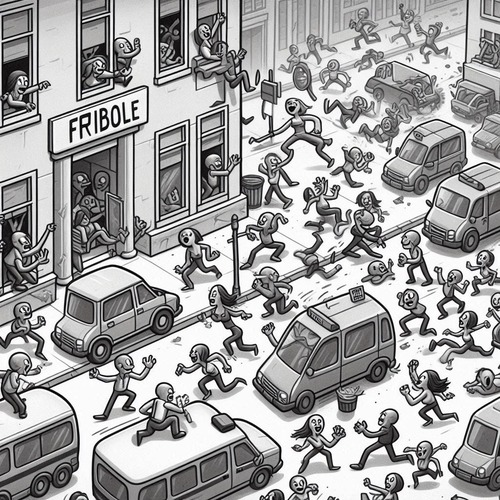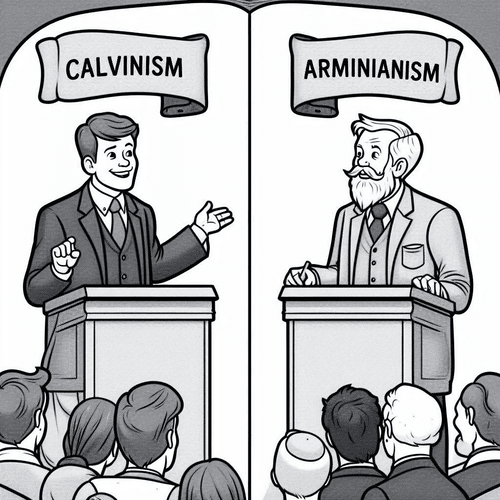The Mysterious Two: Who Are the Anointed Ones in Zechariah?
Picture this: a golden lampstand blazing with light, flanked by two olive trees that pour oil directly into the lamp’s reservoir. The striking vision came to the prophet Zechariah around 520 BC, during one of Israel’s most challenging periods. The Jewish exiles had returned from Babylon, but their temple lay in ruins and their future seemed uncertain.
In this context, God shows Zechariah something remarkable. When the prophet asks about the meaning of the two olive trees, he receives this cryptic answer: “These are the two anointed ones who stand by the Lord of the whole earth” (Zechariah 4:14).
But who are the anointed ones in Zechariah? And do they appear elsewhere in Scripture? For centuries, the mystery has captivated scholars and sparked intense debate…
THE HISTORICAL SETTING: A NATION IN CRISIS
To understand Zechariah’s vision, we must first grasp the desperate circumstances of his time. The year was approximately 520 BC, and the Jewish people had recently returned from 70 years of Babylonian exile. Under Persian rule, they faced the monumental task of rebuilding not just their temple, but their entire national identity.
Two key figures emerged as leaders during this critical period: Jeshua the high priest and Zerubbabel the governor. Jeshua represented the restored priesthood, while Zerubbabel—a descendant of King David—embodied hopes for renewed Davidic leadership. Together, they shouldered the responsibility of spiritual and civil reconstruction.
The temple rebuilding project had stalled due to opposition and discouragement. It was precisely in this moment of crisis that God gave Zechariah his vision of the golden lampstand, assuring the people that His work would be accomplished “not by might nor by power, but by my Spirit” (Zechariah 4:6).
THE PRIMARY REFORMED INTERPRETATION: JOSHUA AND ZERUBBABEL
The Reformed tradition has consistently identified the “two anointed ones” in Zechariah as Jeshua and Zerubbabel, and for good reason. This interpretation fits seamlessly with the immediate context of Zechariah’s prophecy.
The Immediate Historical Fulfillment: Jeshua and Zerubbabel were literally “anointed ones”—individuals set apart by God for specific roles in His redemptive plan. Jeshua had been cleansed and commissioned as high priest in the preceding vision (Zechariah 3:1-10), while Zerubbabel received divine assurance that he would complete the temple despite seemingly impossible obstacles (Zechariah 4:6-10).
The imagery is powerful: the two leaders were like olive trees, providing the oil (symbolising the Holy Spirit’s anointing) that kept the lampstand (representing Israel) burning brightly. Without their Spirit-empowered leadership, the light of God’s people would have been extinguished.
John Calvin, commenting on this passage, emphasised the two offices—priest and civil ruler—were essential for the proper ordering of God’s people. The priest handled spiritual matters and intercession, while the governor provided temporal leadership and protection. Together, they formed a complete picture of godly authority.
Reformed Theological Framework: This interpretation aligns perfectly with covenant theology’s understanding of how God works through ordained offices. Throughout Scripture, we see God raising up prophets, priests, and kings to shepherd His people. The two olive trees represent this principle of complementary leadership under divine authority.
The Westminster Confession of Faith reminds us God “worketh all things according to the counsel of his own will” (3.1). The two anointed ones demonstrate this truth—God providentially placed these leaders in position to accomplish His purposes for Israel’s restoration.
THE TYPOLOGICAL FULFILLMENT: POINTING TO CHRIST
While Jeshua and Zerubbabel fulfilled Zechariah’s prophecy in their historical context, Reformed hermeneutics recognises Old Testament types often point beyond their immediate fulfillment to greater realities in Christ (Zechariah 3:8).
Christ as the Ultimate Anointed One: Jesus Christ perfectly embodies what Jeshua and Zerubbabel represented separately. As our great High Priest, He offered the ultimate sacrifice for sin (Hebrews 7:27). As the King of kings, He rules with perfect justice and authority (Revelation 19:16). In His person, the priestly and kingly offices find their ultimate fulfillment.
This convergence of offices in Christ was prophetically anticipated in Daniel’s vision of “the Anointed One” (the Mashiach) who would come to “finish transgression, to put an end to sin, and to atone for iniquity” (Daniel 9:24-26). Daniel’s prophecy speaks of an anointed one who would be “cut off” after accomplishing redemption—a clear reference to Christ’s sacrificial death that both fulfilled the priestly role of atonement and established His eternal kingdom.
The New Testament reveals Christ Is “the Anointed One” (*ho Christos*) par excellence. He is the “Branch” that Zechariah prophesied would “build the temple of the Lord” and “bear royal honour” while sitting “upon his throne” as both priest and king (Zechariah 6:12-13). What Zechariah saw in two figures, Daniel glimpsed as one—the ultimate Anointed One who would perfectly unite all mediatorial functions.
Progressive Revelation The Reformed principle of progressive revelation helps us understand how Zechariah’s vision unfolds across Scripture. What began as a historical reality in post-exilic Israel finds its deepest meaning in the person and work of Jesus. The two olive trees ultimately point to the one who perfectly combines all mediatorial offices.
This doesn’t diminish the historical reality of Joshua and Zerubbabel’s roles. Rather, it shows how God’s redemptive plan unfolds across history, with each stage building toward the ultimate revelation in Christ.
THE REVELATION CONNECTION: DO THEY REAPPEAR?
One of the most intriguing questions about the two anointed ones in Zechariah is whether they appear elsewhere in Scripture. Many interpreters see a connection to the “two witnesses” of Revelation 11:3-12, who are specifically described as “the two olive trees and the two lampstands that stand before the Lord of the earth” (Revelation 11:4).
Textual Parallels: The parallels between Zechariah 4 and Revelation 11 are striking. Both passages feature olive trees, both mention witnesses who stand before the Lord, and both emphasize divine empowerment for testimony. The apostle John clearly drew upon Zechariah’s imagery when describing his vision.
Reformed Interpretation of Revelation 11: The Reformed tradition has generally interpreted Revelation 11’s two witnesses symbolically rather than as literal future individuals. The idealist view sees them as representing the church’s faithful witness throughout history. The historicist perspective identifies them with the church’s testimony during particular periods of persecution.
This symbolic interpretation aligns with the apocalyptic genre of Revelation, which frequently uses Old Testament imagery to convey spiritual truths rather than predict specific future events. The two witnesses embody the same principle as Zechariah’s olive trees—Spirit-empowered testimony that cannot be extinguished despite opposition.
Hermeneutical Principles: Understanding the connection between Zechariah 4 and Revelation 11 requires careful attention to how Scripture interprets Scripture. Revelation frequently employs what scholars call “intertextuality”—the practice of reusing and reinterpreting Old Testament imagery to communicate New Testament truths.
Rather than requiring identical fulfillment, this approach recognises biblical symbols can have multiple applications while maintaining consistent theological meaning. The olive trees in both passages represent the same fundamental truth: God empowers His witnesses to maintain faithful testimony despite opposition.
CONCLUSION: WHO ARE THE ANOINTED ONES IN ZECHARIAH?
The mystery of Zechariah’s two anointed ones finds its clearest resolution in the Reformed interpretive framework. Joshua and Zerubbabel fulfilled the immediate historical prophecy, serving as Spirit-anointed leaders who enabled Israel’s restoration. Their roles typologically pointed forward to Christ, who perfectly combines priestly and kingly offices. And their witness continues in the church, which maintains faithful testimony through the same Spirit who empowered the original olive trees.
This multi-layered fulfillment demonstrates the richness of biblical prophecy and the wisdom of Reformed hermeneutics. By honoring both historical context and typological meaning, we can appreciate how God’s redemptive plan unfolds across Scripture with remarkable consistency and purpose.
The two anointed ones ultimately remind us God’s work in the world continues through Spirit-empowered witnesses. The principle remains the same then and now: God accomplishes His purposes “not by might nor by power, but by my Spirit.”
THE ANOINTED ONES IN ZECHARIAH: RECOMMENDED READING
- John Calvin, Commentaries on the Twelve Minor Prophets
- Charles Spurgeon, The Treasury of David
- Geerhardus Vos, Biblical Theology
- GK Beale, The Book of Revelation
THE ANOINTED ONES IN ZECHARIAH: RELATED FAQs
What do contemporary Reformed scholars say about the anointed ones in Zechariah 4:14? Michael Horton emphasises the two anointed ones represent the “already-not yet” tension of redemptive history, prefiguring Christ while pointing to the church’s ongoing witness. RC Sproul saw the passage as demonstrating God’s sovereignty in raising up leaders, with the olive oil symbolising the Holy Spirit’s irresistible work. Meredith Kline connected it to his “intrusion ethics” framework, showing how the witnesses represent God’s kingdom breaking into history through Spirit-empowered testimony.
- Why do some theologians see a connection to the two tablets of the law? Reformed scholars Herman Bavinck and GK Beale note parallels between the two olive trees and the two stone tablets, both representing God’s authoritative word through dual witnesses. Just as the law required “two or three witnesses” to establish truth, God’s redemptive work proceeds through complementary testimonies. John Frame suggests this pattern reflects the Trinity’s unified yet distinct work, mirrored in the distinct roles of priest and king.
- How does the Hebrew grammar of “sons of oil” (b’nei-yitzhar) affect the interpretation? The phrase literally means “sons of fresh oil,” emphasising their essential nature rather than ceremonial anointing—they’re inherently connected to the spiritual power’s source. Bruce Waltke and Tremper Longman III argue this suggests they’re channels through which oil flows, not mere recipients. The plural “sons” indicates God’s work proceeds through multiple, complementary witnesses, prefiguring the church’s plural leadership model.
- What role does the golden bowl (gullat zahav) play in the vision that interpreters often overlook? Dennis Johnson notes the golden bowl serves as the distribution centre receiving oil from both trees and channelling it to the seven lamps—showing effective leadership requires both sources working in harmony. Richard Pratt Jr calls this “covenantal unity”—priestly intercession and kingly protection must work together to sustain God’s people. This prefigures the church’s corporate nature where diverse offices contribute to the body’s health and witness.
How do Reformed scholars respond to the claim this passage teaches a “dual covenant” with separate Jewish and Gentile tracks? Reformed theology firmly rejects this interpretation. John Piper argues Scripture teaches one covenant of grace administered through various historical forms. Sinclair Ferguson emphasises Paul’s olive tree metaphor in Romans 11 addresses Gentile inclusion in the existing covenant, not parallel covenant structures. The Reformed consensus maintains Zechariah’s vision anticipates the unified church incorporating both Jew and Gentile under Christ’s priesthood and kingship.
THE ANOINTED ONES IN ZECHARIAH: OUR RELATED POSTS
Editor's Pick
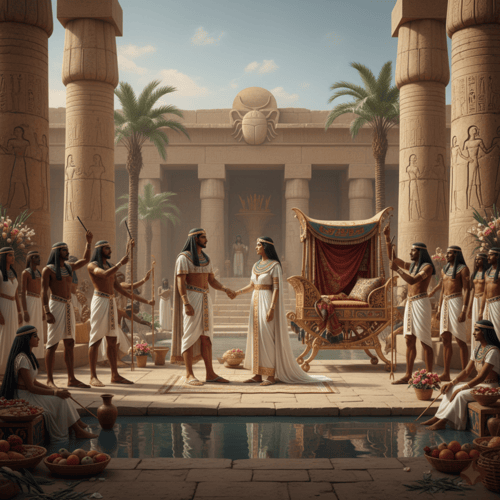
Did Joseph Sin in Marrying an Egyptian?
It’s a troubling question: if God forbade His people from foreign alliances, why was Joseph’s marriage to an Egyptian not [...]
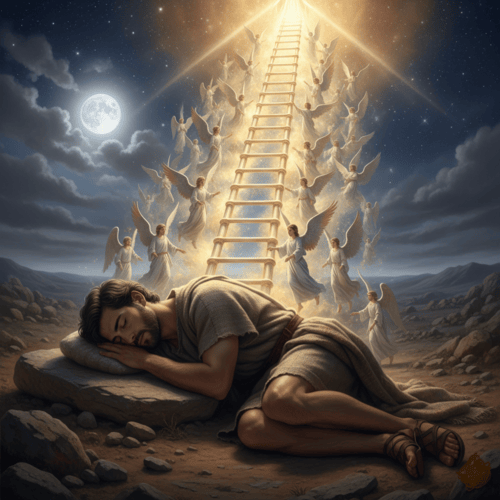
Jacob’s Ladder: How Jesus Bridges Earth and Heaven
THE GOSPEL IN GENESIS 28... A stairway to heaven—humanity has always dreamt of one since the Fall. Every religion offers [...]
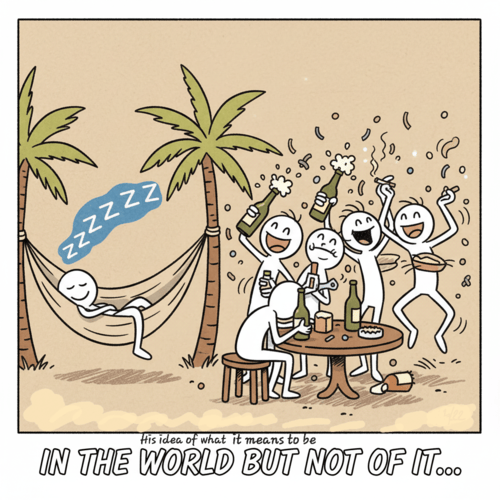
In the World But Not Of It: What John 17:14-16 Really Means
Scrolling through social media, we’re bombarded by voices shouting for our allegiance—politics, trends, ideologies. As Christians, we feel the tension: [...]
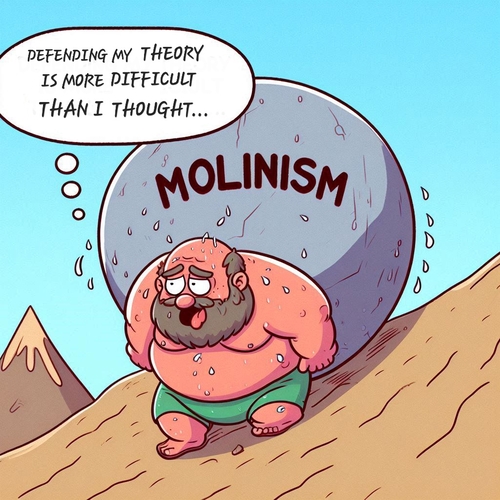
Is Molinism Biblical? Reformed Challenges to Middle Knowledge
In a world craving autonomy, does God truly reign supreme, or does He negotiate with human choices? The question lies [...]

Does the Bible Teach Purgatory? Scripture’s Clear Answer
Imagine standing at the very edge of eternity, wondering if the soul requires further cleansing before you enter heaven's gates. [...]
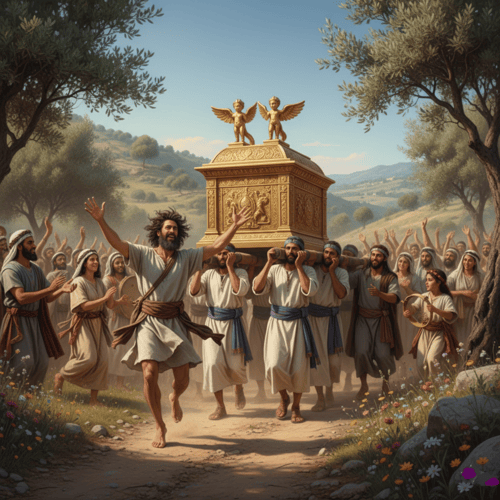
David Danced Before the Lord—Why Don’t Reformed Churches?
When we read about King David leaping and dancing before the Lord “with all his might” (2 Samuel 6:14), a [...]
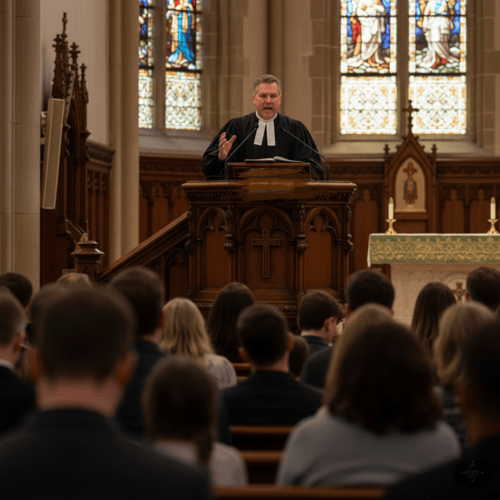
Faithful to the Pattern: Why Paul Reserves Ordination for Men
Few topics in contemporary Christianity generate more tension than women’s ordination. This question touches real lives, genuine callings, and deeply [...]

‘Flee Sexual Sin’: Why Does Paul Single This Sin Out?
When the apostle Paul writes to the Corinthian church, he doesn’t tell them to simply avoid sexual immorality or resist [...]
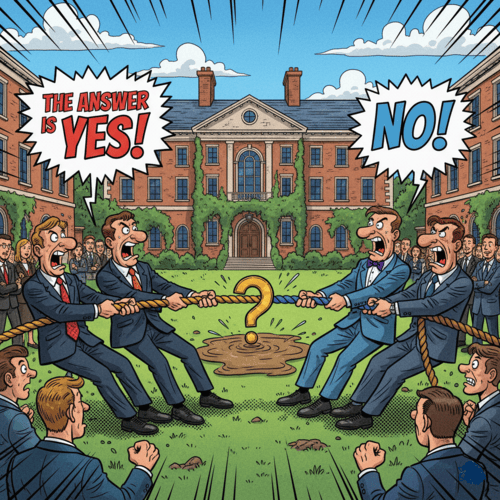
Does Denying God’s Sovereignty Mean Denying the Gospel?
RC Sproul once warned denying God’s sovereignty “eviscerates” grace—a strong word meaning to gut or disembowel something, leaving only an [...]
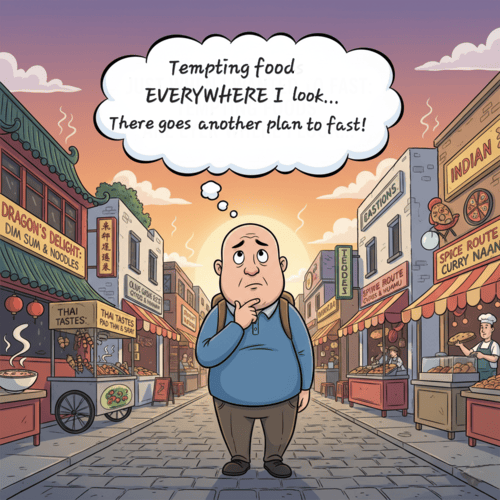
Why Christians Fast: The Biblical Discipline’s Very Real Rewards
Why would Christians, who rejoice in the good gifts of food and fellowship, deliberately choose to go without? Isn’t fasting [...]
SUPPORT US:
Feel the Holy Spirit's gentle nudge to partner with us?
Donate Online:
Account Name: TRUTHS TO DIE FOR FOUNDATION
Account Number: 10243565459
Bank IFSC: IDFB0043391
Bank Name: IDFC FIRST BANK




